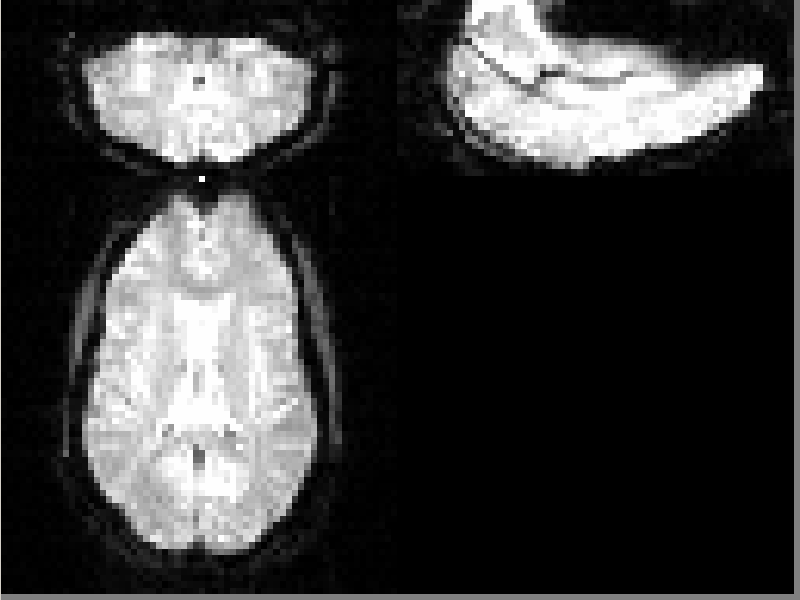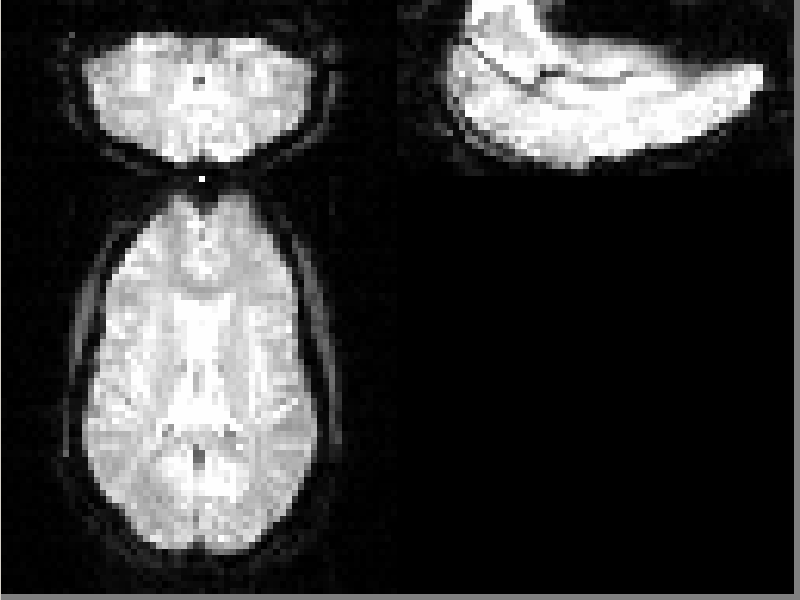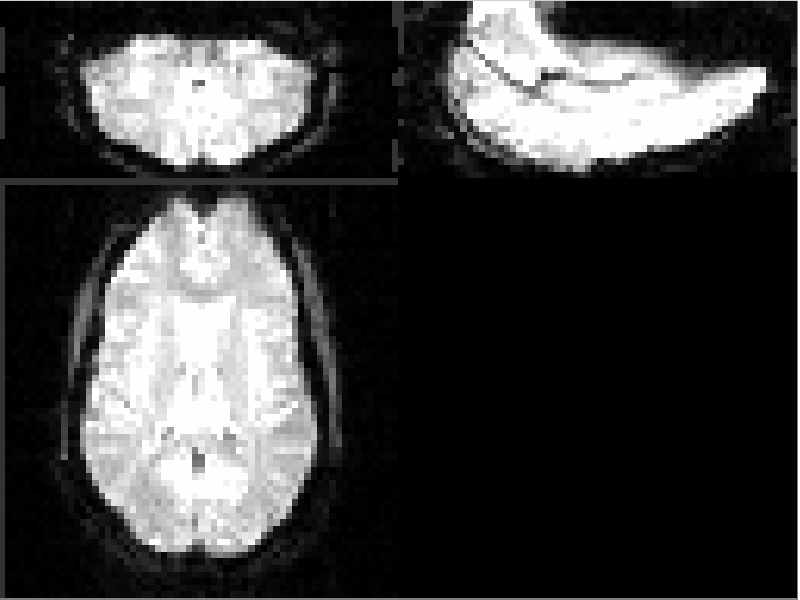Inter-slice Motion Correction for fMRI
From NAMIC Wiki
Home < Inter-slice Motion Correction for fMRI
Contents
Objective
* To perform inter-slice motion correction in fMR images using affine and non-rigid registration methods.
Progress
* Implemented and tested b-Spline/affine registration with Mattes-MI and KL metrics. * Coding completed. However, results are far from satisfactory. * Progress (maybe) stymied by "poor" resolution of data. * Progress (maybe) stymied by "not-so-viable" metrics (MI, etc.).
Algorithms Used From ITK
Metrics
- Mean Squared - smooth, and for rigid registration, the minimum is fairly correct (physically)
- MI (Wells, Mattes) - very non-smooth - lot of discontinuities. For all motions, results are wrong (possibly because cannot identify a good minimum pt)
- KL-Divergence (Chung, Wells, et. al.) - again very non-smooth. Cannot identify a good minimum point.
Transformations
- Rigid - works well for ms metric
- Affine - does not work for any metric
- B-spline non-rigid - tested with ms and kl. Extremely poor results.
Results
Original fMRI
MS Metric with Rigid Motion
MS Metric with Affine Transform
Mattes MI metric with affine transform
something
Issues
- As can be seen any registration result looks more jagged (along the sagittal and coronal sections).
- Low sampling rate and image noise - all the metrics are extremely non-smooth as a result.
- Even the slightest change in initialization results in a large deviation in the registration result.
Open questions
* Intensity normalization / histogram equalization - would these have any impact on inter-slice registration? Would they affect the computation of the joint-entropies for MI/KL metrics. * Should there be some regularization factor on the registration to limit the motion ?
To Do
* Right now, registration is done on a slice by slice basis. However, due to the low resolution of fMRI and the absence of gradients result in low registration accuracy. We are investigating using alternative image-to-image metrics like the KL divergence. We are also looking at simultaneously registering multiple slices.
Key Investigators
* Firdaus Janoos, Raghu Machiraju, Steve Pieper, Wendy Plesniak.




